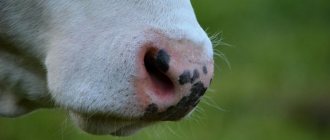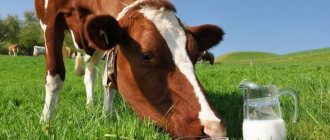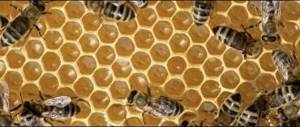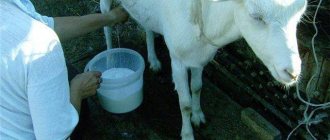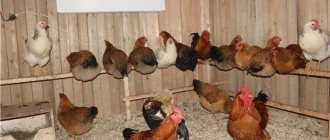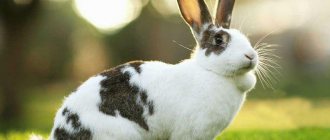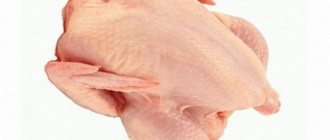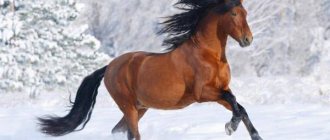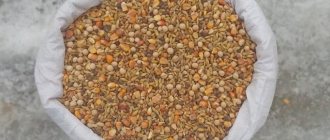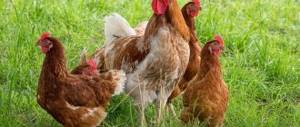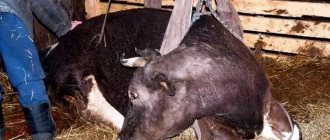What happens if you drink a lot of water? Is drinking a lot of water harmful or beneficial?
Adequate fresh water and a timely transition from milk to muesli are important factors for success when raising post-milk calves.
What else does their health and full development, and therefore the productivity of the future dairy herd, depend on? Ending. Start at No. 3
https://www.youtube.com/watch?v=subscribe_widget
Calves must be provided with water
Unlike milk, water goes directly into the rumen. It is of great importance for the development of the still very small calf rumen. Per 1 kg of live weight, calves consume 3–4 times more water than adult animals. Only if a sufficient amount of water gets into the rumen (see figure) can rumen bacteria multiply intensively.
They break down easily digestible carbohydrates in the feed, resulting in the formation of volatile fatty acids (acetic, propionic and butyric), which irritate the intestinal walls and thus stimulate the growth of villi. The sooner a calf starts drinking water, the faster its rumen will develop, the more plant matter it will eat, and the better its appetite will be.
Calves under three weeks of age do not need much water, the calf just needs to have fresh, clean water available at all times. The moisture contained in colostrum, milk and skim milk is associated with other substances and does not satisfy the needs of young animals. With a lack of water, calves become lethargic, inactive, and develop diarrhea, which often cannot be treated with medication.
Already in the first days after birth, the calf should be given water: until 10–15 days of age, it is better to use warm, boiled water, and then raw water. Until 15 days, he is given 0.5–1 liters of water daily, then 1–2 liters of water. Fresh water should be freely available, and if this is not possible, water can be drunk from nipple drinkers and from a bucket 1-2 hours after colostrum or milk. It is especially necessary to monitor the uninterrupted supply of water to calves in the summer, as well as at night, because calves eat prestarter at night;
at the age of three weeks, with a partial transfer of calves to another type of feeding (from milk replacer based on skim milk replacer to milk replacer based on whey), water consumption can noticeably increase against the background of an increase in the palatability of the grain starter;
During weaning, calves can drink more than 9 liters of water.
Of interest is the accumulated experience in the artificial faunization of calves (by feeding them the rumen contents of adult animals) in order to accelerate the “acceleration” of the rumen. Even in the last century, Czech scientists (L. Slanina et al., 1982) were able to obtain good practical results when stimulating the microbial contents of the rumen of calves using the chewing gum of highly productive animals, but only when switching to diets containing hay.
Modern studies (A.S. Kozlova and others) have shown that with early faunization of the proventriculus of calves, the consumption of plant feed at one month of age increased by 16.5–18.2%. In particular, from 3–5 days of age they received rumen contents taken from adult animals at the rate of 2.5–3 ml per 1 kg of live weight. At the same time, the number of bacteria in 1 ml of rumen fluid increased from 28.5–28.7 to 36.5–38.8 billion, and the number of ciliates - from 0.4–0.5 to 0.9–1.0 thousand.
When the calves are a little older
In the second (mixed) period of formation and development of the proventriculus, systems for rearing young animals are used, which reduce the consumption of whole milk and expensive milk substitutes based on skim milk. Increasingly, this is being done through the use of special milk replacer recipes based on whey, which additionally stimulate increased consumption of plant feed.
Typical liquid feeding programs aim to limit fluid intake and encourage early consumption of solid dry food. Such programs do not provide maximum growth, but do promote faster scar development. Most often, it is recommended to feed calves with liquid milk replacer at a daily rate of 10–12% of body weight.
Abroad, the most common feeding level is 8–14% of body weight. Higher standards are possible without the risk of developing diarrhea. When choosing a feeding program, it is necessary to compare the cost of liquid feed with the gain in live weight, i.e., take into account the cost of 1 kg of gain. In addition, the long-term consequences of higher body weight gains in young calves should be considered.
We suggest you read Why cats wag their tail Determining an animal's emotions by movements
The mixed period of digestive development is key. The health and correct development of the ruminant animal depend on the efficiency and quality of rumen development. Dry starter feed entering the rumen increasingly stimulates the development of ruminant digestion. The microflora characteristic of an adult animal is formed in the rumen.
The sooner the animal begins to use nutrients from inexpensive concentrated and roughage feed for its life and growth, the sooner it can stop feeding expensive feed, which promises direct economic benefits. This is only possible when feeding complete feed (muesli) that meets generally accepted international standards.
Weaned calf diet (forage and concentrates) is generally less expensive than milk and replacers;
as long as calves are on a liquid diet, calf growth remains limited. Weight gain increases significantly after weaning, provided the calf has adapted well to the roughage diet.
Post-milk period in feeding calves
After weaning from milk, animals are able to highly efficiently digest bulky plant foods with an increased amount of fiber. As a result, more volatile fatty acids and microbial protein are produced. Carbohydrates (starch and other polysaccharides) not broken down in the rumen, microbial protein and plant protein not broken down in the forestomach move to the abomasum and then to the intestine for further digestion.
Unfortunately, given the lack of effective prestarters (muesli) in the diets of young calves in the vast majority of farms in our republic, livestock breeders are forced to continue to feed grown young animals with underdeveloped forestomachs with full-fledged milk substitutes even after 8 weeks of age, and often up to 4 months.
At the current price level on the market, the cost of 1 kg of protein from milk replacer is 4–5 times higher than the same amount of protein from prestarter feed. In addition, the cost of milk replacer in dry form exceeds the cost of prestarters by 2.5–3.5 times. Taking this into account, is it possible to seriously talk about increasing the economic efficiency of raising young cattle under conditions of long-term (3.5–4 months) feeding of calves?
When raising heifers, you cannot skimp on prestarter mixtures. Reducing the level and adequacy of feeding is much more expensive. After all, a decrease in average daily weight gain by 50 g reduces the weight of an adult cow by 40 kg or extends the period of first calving by two months. This means that all costs of raising each cow will increase significantly.
Now there is no point in seriously separating technologies when raising calves for dairy herd and for fattening. In both cases, you need a good start. By obtaining gains at the level of 800–950 g in replacement heifers in dairy farming, it is possible to achieve an earlier introduction of heifers into the main herd, and when raising and fattening young beef cattle, it is possible to accelerate its growth, increase the economic efficiency of fattening and quickly achieve the required weight for slaughter of an animal.
For example, in ZAO Slavyanskoye, Oryol region of the Russian Federation, a new approach to feeding was introduced at a large complex for raising and fattening cattle (5,600 bulls). Young animals aged about two months, instead of the traditional feeding of milk replacer (400 liters during the milk phase), were introduced into the diet with 400 g of a high-energy product that helps prevent diarrhea, in liquid form, and fed 30 kg of prestarter for three weeks.
At the same time, we did not use CCM! As a result, the new feeding program without milk replacer made it possible to achieve a significant increase in the average daily gain of bulls (by 200–300 g per day), 100% safety of young animals, reduced feed costs and increased economic efficiency of rearing. During the adaptation period alone, from the moment of delivery to the complex until the transition to starter feed, the savings per bull amounted to about 30 US dollars.
We invite you to read: Has your cat begun to eat poorly? — 10 reasons why the cat doesn’t eat anything!
With modern approaches to feeding, dairy calves can produce almost the same gains as fattened young animals, which is especially important in the first 3–4 months of life. This developmental phase largely determines the subsequent productivity of replacement heifers. Successful calf rearing and good proventriculus development at an early age are an excellent starting point for heifer rearing.
Until 2–3 months of age, heifers and bulls are fed the same. At this age, you should not skimp on the quality and volume of concentrated food: it should be given “in plenty”, in quantities close to the actual consumption. In the future, such feeding will have a positive effect on the growth of cow productivity, for which there is objective evidence.
last added
How does water enter the calf's body?
Everything the calf consumes goes down the esophagus. But not everything that goes into it comes out of it.
In addition to reacting to the smell, taste and behavioral characteristics associated with daily milk consumption, calves have a reflex reaction. This muscle reaction in the scar-reticular region forms what we call the “esophageal groove.” Thus, with the help of this muscular structure in the rumen, most of the milk is transferred from the rumen directly to the fourth section of the stomach, which is called the abomasum and resembles the human stomach.
Conversely, plain water, as well as dry food, goes directly into the rumen. There they are mixed and exposed to bacteria (fermentation). For optimal fermentation, 4 times more water should be supplied than dry food.
The profitability of rumen development depends on the amount of water
The breakdown of carbohydrates (mainly from the grain group) in the rumen promotes the growth of papillae on the walls of the rumen. How do papillae affect profitability? Ideally, we aim to transition calves from milk to solid feed to reduce feeding and labor costs. However, the calf can only absorb nutrients from the surface of the rumen. The surface depends significantly on the growth of papillae: large and long papillae mean a larger scar surface.
UK scientists compared the consumption of concentrates and the rate of growth among two groups of calves - those that consumed plenty of water during weaning and those that were limited in the amount of water. Calves that had free access to water consumed 2.5 times more feed compared to calves that were limited in water consumption. Accordingly, calves that consumed more concentrates had greater gains. Therefore, more water means greater weaning gains.
Tips to increase your water intake:
- Calves only consume the water they have access to! Provide calves kept in individual cages or hutches with free access to drinking water. If calves are kept in groups, check drinkers daily for water.
- Calves can't drink ice! In the cold season, after drinking milk, give the calves grain. While the calf is consuming it, fill the buckets with water that is at body temperature. If young animals are kept in groups, check daily that the water in the drinking bowls does not freeze.
- Calves love to drink clean water. When kept in groups, wash drinking bowls as often as possible. In individual houses, it is recommended to wash buckets twice a week, and more often in hot weather.
- Smaller calves prefer water at a temperature of 39°C (normal water temperature is 10°C).
milkUa.Info based on materials from dairyherd
Good water supply: higher feed intake, better growth!
Research shows that during the period of milk replacer feeding, the calf's consumption of hay and concentrates is higher if water is always freely available. In addition, providing unlimited amounts of water has a positive effect on the development of the animal’s rumen. The SLOTEN company conducted special studies on its pilot farm.
Thus, rational management of the development of pregastric digestion in calves of the dairy period under production conditions will inevitably contribute to maintaining the health and increasing the growth energy of young animals, reducing the costs of raising them, as well as increasing the subsequent productivity of animals and increasing the economic efficiency of dairy cattle breeding in general.
Ask the editor a question
Adequate fresh water and a timely transition from milk to muesli are important factors for success when raising post-milk calves. What else does their health and full development, and therefore the productivity of the future dairy herd, depend on?
Ending. Start at No. 3
Calves must be provided with water
Unlike milk, water goes directly into the rumen. It is of great importance for the development of the still very small calf rumen. Per 1 kg of live weight, calves consume 3–4 times more water than adult animals. Only if a sufficient amount of water gets into the rumen (see figure) can rumen bacteria multiply intensively. They break down easily digestible carbohydrates in the feed, resulting in the formation of volatile fatty acids (acetic, propionic and butyric), which irritate the intestinal walls and thus stimulate the growth of villi. The sooner a calf starts drinking water, the faster its rumen will develop, the more plant matter it will eat, and the better its appetite will be.
The amount of water a calf needs depends on its age and development:
Calves under three weeks of age do not need much water, the calf just needs to have fresh, clean water available at all times. The moisture contained in colostrum, milk and skim milk is associated with other substances and does not satisfy the needs of young animals. With a lack of water, calves become lethargic, inactive, and develop diarrhea, which often cannot be treated with medication.
Already in the first days after birth, the calf should be given water: until 10–15 days of age, it is better to use warm, boiled water, and then raw water. Until 15 days, he is given 0.5–1 liters of water daily, then 1–2 liters of water. Fresh water should be freely available, and if this is not possible, water can be drunk from nipple drinkers and from a bucket 1-2 hours after colostrum or milk. It is especially necessary to monitor the uninterrupted supply of water to calves in the summer, as well as at night, because calves eat prestarter at night;
at the age of three weeks, with a partial transfer of calves to another type of feeding (from milk replacer based on skim milk replacer to milk replacer based on whey), water consumption can noticeably increase against the background of an increase in the palatability of the grain starter; During weaning, calves can drink more than 9 liters of water.
Scientists from different countries compared the productivity of calves with free access to water and without water. At the Agricultural University of Padua (Italy), when calves had free access to water, daily gains increased, they consumed more prestarter and carried less weight (see table). From this we can conclude: young animals tolerate a lack of water worse than a lack of feed.
Of interest is the accumulated experience in the artificial faunization of calves (by feeding them the rumen contents of adult animals) in order to accelerate the “acceleration” of the rumen. Even in the last century, Czech scientists (L. Slanina et al., 1982) were able to obtain good practical results when stimulating the microbial contents of the rumen of calves using the chewing gum of highly productive animals, but only when switching to diets containing hay.
Modern studies (A.S. Kozlova and others) have shown that with early faunization of the proventriculus of calves, the consumption of plant feed at one month of age increased by 16.5–18.2%. In particular, from 3–5 days of age they received rumen contents taken from adult animals at the rate of 2.5–3 ml per 1 kg of live weight. At the same time, the number of bacteria in 1 ml of rumen fluid increased from 28.5–28.7 to 36.5–38.8 billion, and the number of ciliates - from 0.4–0.5 to 0.9–1.0 thousand.
When the calves are a little older
In the second (mixed) period of formation and development of the proventriculus, systems for rearing young animals are used, which reduce the consumption of whole milk and expensive milk substitutes based on skim milk. Increasingly, this is being done through the use of special milk replacer recipes based on whey, which additionally stimulate increased consumption of plant feed.
Typical liquid feeding programs aim to limit fluid intake and encourage early consumption of solid dry food. Such programs do not provide maximum growth, but do promote faster scar development. Most often, it is recommended to feed calves with liquid milk replacer at a daily rate of 10–12% of body weight. Abroad, the most common feeding level is 8–14% of body weight. Higher standards are possible without the risk of developing diarrhea. When choosing a feeding program, it is necessary to compare the cost of liquid feed with the gain in live weight, i.e., take into account the cost of 1 kg of gain. In addition, the long-term consequences of higher body weight gains in young calves should be considered.
The mixed period of digestive development is key. The health and correct development of the ruminant animal depend on the efficiency and quality of rumen development. Dry starter feed entering the rumen increasingly stimulates the development of ruminant digestion. The microflora characteristic of an adult animal is formed in the rumen. Calves begin to obtain energy in gradually increasing amounts from volatile fatty acids that form in the rumen and replace energy sources from dairy feeds digested in the rennet. One of the main products of fermentation is high-quality microbial protein for calves.
The sooner the animal begins to use nutrients from inexpensive concentrated and roughage feed for its life and growth, the sooner it can stop feeding expensive feed, which promises direct economic benefits. This is only possible when feeding complete feed (muesli) that meets generally accepted international standards. Weaning should occur when the animal consistently eats at least 1 kg of feed (approximately 1% of its body weight) over a three-day period.
Even at the end of the last century in the USA, attention was focused on the fact that weaning calves from dairy feeds after 8 weeks of age leads to significant costs for the following reasons:
Weaned calf diet (forage and concentrates) is generally less expensive than milk and replacers; as long as calves are on a liquid diet, calf growth remains limited. Weight gain increases significantly after weaning, provided the calf has adapted well to the roughage diet.
Post-milk period in feeding calves
After weaning from milk, animals are able to highly efficiently digest bulky plant foods with an increased amount of fiber. As a result, more volatile fatty acids and microbial protein are produced. Carbohydrates (starch and other polysaccharides) not broken down in the rumen, microbial protein and plant protein not broken down in the forestomach move to the abomasum and then to the intestine for further digestion. In the post-milk period, young animals are completely transferred to plant feed, the optimal combination of which stimulates the further development of the proventriculus, and adequate feeding ensures intensive growth and optimal development.
Unfortunately, given the lack of effective prestarters (muesli) in the diets of young calves in the vast majority of farms in our republic, livestock breeders are forced to continue to feed grown young animals with underdeveloped forestomachs with full-fledged milk substitutes even after 8 weeks of age, and often up to 4 months. At the current price level on the market, the cost of 1 kg of protein from milk replacer is 4–5 times higher than the same amount of protein from prestarter feed. In addition, the cost of milk replacer in dry form exceeds the cost of prestarters by 2.5–3.5 times. Taking this into account, is it possible to seriously talk about increasing the economic efficiency of raising young cattle under conditions of long-term (3.5–4 months) feeding of calves?
When raising heifers, you cannot skimp on prestarter mixtures. Reducing the level and adequacy of feeding is much more expensive. After all, a decrease in average daily weight gain by 50 g reduces the weight of an adult cow by 40 kg or extends the period of first calving by two months. This means that all costs of raising each cow will increase significantly. The system of using high-quality prestarters for calves in combination with proper feeding of milk and milk replacer allows calves to be removed from feeding within the recommended time frame.
Now there is no point in seriously separating technologies when raising calves for dairy herd and for fattening. In both cases, you need a good start. By obtaining gains at the level of 800–950 g in replacement heifers in dairy farming, it is possible to achieve an earlier introduction of heifers into the main herd, and when raising and fattening young beef cattle, it is possible to accelerate its growth, increase the economic efficiency of fattening and quickly achieve the required weight for slaughter of an animal.
For example, in ZAO Slavyanskoye, Oryol region of the Russian Federation, a new approach to feeding was introduced at a large complex for raising and fattening cattle (5,600 bulls). Young animals aged about two months, instead of the traditional feeding of milk replacer (400 liters during the milk phase), were introduced into the diet with 400 g of a high-energy product that helps prevent diarrhea, in liquid form, and fed 30 kg of prestarter for three weeks. At the same time, we did not use CCM! As a result, the new feeding program without milk replacer made it possible to achieve a significant increase in the average daily gain of bulls (by 200–300 g per day), 100% safety of young animals, reduced feed costs and increased economic efficiency of rearing. During the adaptation period alone, from the moment of delivery to the complex until the transition to starter feed, the savings per bull amounted to about 30 US dollars. Having become convinced of the high efficiency of the new feeding program, they began to use it not only for fattening bulls, but also for raising replacement heifers.
With modern approaches to feeding, dairy calves can produce almost the same gains as fattened young animals, which is especially important in the first 3–4 months of life. This developmental phase largely determines the subsequent productivity of replacement heifers. Successful calf rearing and good proventriculus development at an early age are an excellent starting point for heifer rearing. Until 2–3 months of age, heifers and bulls are fed the same. At this age, you should not skimp on the quality and volume of concentrated food: it should be given “in plenty”, in quantities close to the actual consumption. In the future, such feeding will have a positive effect on the growth of cow productivity, for which there is objective evidence.
For example, in the Larinovka agricultural production complex in the Vitebsk region, since 2007, a system of feeding calves using high-quality muesli has been introduced, which made it possible to ensure early weaning of calves from dairy feed at the age of 55–60 days. The current weight gain of calves up to 60 days of age is about 830 g, at 60-100 days - 850 g, and at the age of 100-150 days - 850-900 g. The average live weight of full-aged cows over the past period has increased from 470-500 to 650- 700 kg, and the annual milk yield per cow exceeded the 8,000 mark. Based on the results of work for nine months of 2012, the profitability of milk production on the farm was about 60%.
Thus, rational management of the development of pregastric digestion in calves of the dairy period under production conditions will inevitably contribute to maintaining the health and increasing the growth energy of young animals, reducing the costs of raising them, as well as increasing the subsequent productivity of animals and increasing the economic efficiency of dairy cattle breeding in general.
Other sources of fluid
The need for water depends very much on what we eat. If you are a fan of spicy, salty foods and preservative-rich processed foods, then you really need to drink a lot of water. The more junk food you consume, the more resources your body uses to flush out all the toxins and waste. If you care about your health, then switch to healthy foods.
You may be surprised, but almost half of all diseases occur because there is not enough simple water in the body. To prevent your joints from creaking, stones from depositing in your kidneys, and your skin from being too dry, you just need to make it a rule to maintain a normal level of fluid in your body.
We cannot live without water. Even the process of breathing, which seems to be autonomous, requires a large amount of fluid to moisturize the lungs. Only for this you need about 0.5 liters per day. It should be taken into account that the exhaled air contains moisture, which increases the body’s water consumption to 0.7 or 1 liter, depending on physical activity.
Eating too little of it contributes to the accumulation of waste products and toxins in the body, the formation of excess fat, and can cause poor muscle tone and deterioration of the digestive system. Lack of water greatly increases blood viscosity, which can lead to low blood pressure and the formation of blood clots. That is, the question of why drink a lot of water can be answered very easily: so that the body can fully function.
Separately, we can say about the relationship between a woman’s fragile beauty and the consumption of a sufficient amount of liquid. Now you will understand why you need to drink more water. The smoothness and good color of the skin, condition and hair growth depend on this. With a lack of clean water, wrinkles form much faster, dry skin increases, and hair loss increases.
To do this, just go to a general practitioner, who will confirm that you can drink a lot of water. Many people are afraid of edema, but in fact they are a sign of serious illness or an attempt by the body to stock up on fluid for future use. If you consume enough water every day (for adults this figure starts from 8 glasses, increasing if necessary for heavy, physical labor, or hot weather outside), then the excretory system will work like clockwork.
This means that the metabolism will proceed correctly, and excess fluid will be removed from the body in a timely manner, removing toxins and decay products. Why is the question still relevant: is it harmful to drink a lot of water? Because its quality in many regions leaves much to be desired, and also because of the prevalence of severe kidney diseases among the population, for which a water-salt diet is indicated.
Caffeinated drinks (teas and coffee) should not be used to quench your thirst. The soda contained in soda, coffee, beer and stronger alcoholic drinks leads to dehydration. Their consumption leads to increased consumption of water reserves in the body. If you regularly use them instead of water, you will experience heartburn, abdominal pain, lower back pain, headaches and depression.
We suggest you read What to do if laying chickens do not grow? - General information
How much water should a cow be given per day?
How much a cow should drink per day depends on several factors:
- diet;
- indoor and outdoor air temperatures;
- humidity level;
- her own physiological state;
- from the lactation phase.
A cow can drink about 100–110 liters per day, but no less than 70 liters. This means that she needs a supply of up to 36,500 liters per year. This amount exceeds her body weight by 50–60 times. If you individually calculate fluid consumption rates depending on the amount of food, then for every kilo of dry food you need 4-6 liters of water. If the cow is in a state of lactation, then normally the level of milk production should be taken into account. For example, if a heifer gives 20 liters of milk per day and consumes 17 kg of feed, then she needs at least 70 liters of liquid per day.
Water consumption increases on hot days, during the active phase of lactation, i.e. at a time when the cow has to give up more fluid through milk and sweat.
What happens to the body if little water is consumed?
All life support processes require water. This doesn't just apply to urination. Together with breathing and sweat, we also release precious moisture. In this way, the body loses about 2 liters of fluid per day, which it must replenish. Soups, compotes, and other food products, of course, contain a liquid part, but it has a different structure and does not replace plain water.
It is harmful to drink a lot of water only if you have direct contraindications from a doctor; in other cases, you should at least block the daily fluid loss. Dehydration of the body is a severe condition that undermines the functioning of its defense mechanisms. This occurs especially often during times of severe vomiting or diarrhea or elevated body temperature. At such moments, water consumption should be as high as possible.
When to start giving your calf water
From the beginning of feeding grains, it is necessary to give calves water (from about the fourth day of life). There is no need to boil the water - just so that it is not cold, but below the temperature of fresh milk, otherwise the calf will drink water instead of milk, and not out of thirst.
A bucket of water should be placed about half an hour after eating. An hour before the next feeding, the water should be removed so that the calf has an empty stomach by the time it drinks.
Note(!): If you do not have the opportunity to provide constant access to water, then do this: put the water in half an hour after drinking milk - the calf will drink as much as it wants, and then immediately remove the bucket.
Moderate degree of dehydration
Many people don’t even think about such simple things. Why drink a lot of water, because you can eat soup, an apple, drink juice - and the body will get everything it needs. The majority thinks so. This is a big misconception, because nothing else can replace clean water. If a person drinks little water, dehydration occurs.
And most of us are constantly in this state. The first symptom to pay attention to is thirst. Getting used to drinking little, we may not pay attention to it for a long time, especially if we are very busy at work. In this case, the body turns on the saving mode. Sweating decreases and urination decreases.
You can work all day and never need to go to the toilet. However, the body works in emergency mode. To compensate for the decrease in moisture reserves, the body begins to remove fluid from the cells. This way water enters the blood, maintains blood pressure at the proper level and replenishes the supply of lymph.
Now we will tell you what happens to the body if you continue to live in the same way. We hope that this will become a strong enough argument that will explain why you need to drink more water. If you drink less than a liter of water every day (not counting soups, coffee, tea and alcoholic drinks), then subsequent dehydration can lead to disruption of the function and condition of the kidneys, liver and heart.
Is it possible to give a calf water?
It happens that the bull drank too much water. This is a common situation when the calf is still small and is just getting accustomed to drinking liquids other than milk.
If too much water is drunk, for example, the baby drank 2 times more than normal, he may become diarrhea, refuse to eat main food, etc. Water is limited to such animals.
To prevent the calf from drinking excess liquid:
- give the water a little cooler than usual;
- do not leave it in the public domain - remove it an hour before feeding and half an hour after drinking milk.
Important(!): You should not give sweetened water to calves (adult cows too, by the way), since they are not able to absorb sugar. But it’s very easy to disrupt metabolic processes in the body with large amounts of sugar.
Proper nutrition
If you eat enough fresh vegetables and fruits (at least 5 servings per day), you can slightly reduce the amount of water you drink per day. These are exactly the products that give the body precious moisture in the right form. The more your diet differs from healthy, that is, the more flour, fried, fatty, semi-finished products it contains, the greater the need for clean water. You can be sure that drinking a lot of water is beneficial. All leading experts and nutritionists say this.
